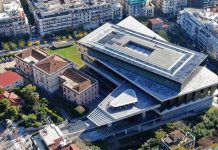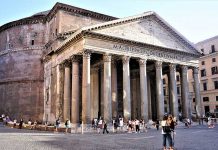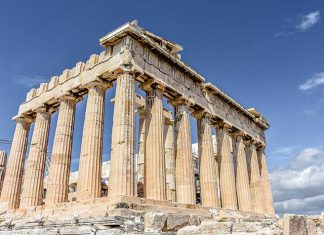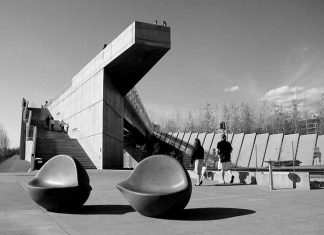| Architect: Filippo Brunelleschi (Questionable) |
| Location: Florence, Italy |
| Construction year: 1442-1443 |
| Structure material: Brick and stones |
| Architectural style: Renaissance architecture |
The Pazzi Chapel, located in Florence, Italy, is a masterpiece of early Renaissance architecture. Designed by the famous Italian architect Filippo Brunelleschi (The latest works argue that it is not obvious and the architect of the building may be Giuliano da Maiano or Michelozzo) in the 15th century, this small structure is considered one of the most important Renaissance examples.
Creating a balanced architecture with its harmonious proportions and use of pure geometric forms, the chapel has been a source of inspiration for the later Renaissance buildings.
Filippo Brunelleschi, the father of Renaissance architecture, is one of the greatest Italian Renaissance architects. He is better known for designing the dome of Florence Cathedral, a keystone of the Renaissance and an engineering marvel.
In this article, we’ll talk about the architectural design and construction of the Pazzi Chapel, its artistic and cultural significance as well as how to visit it.
Architecture of the Pazzi Chapel
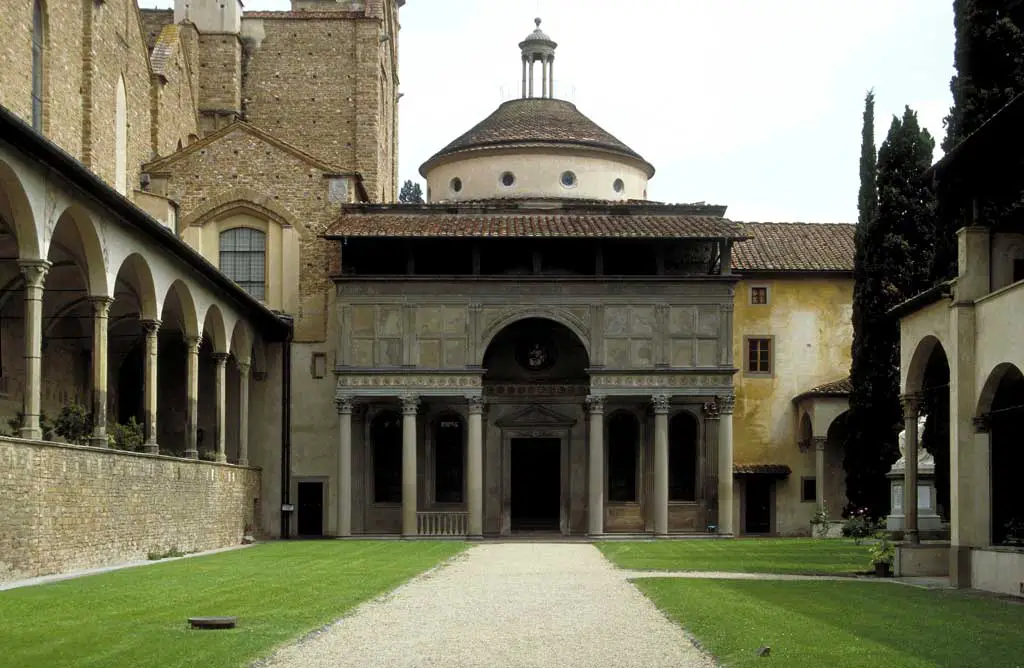
The building has a brilliant architectural style, with 6 Corinthian columns outside, many Corinthian pilasters inside, a triumphal arch, barrel vaults, decorations, and other elements. All the elements, details, and spaces were rationally and mathematically organized.
It features many simple geometric forms that you can find in numerous examples of the Renaissance. Architect Brunelleschi used these shapes harmoniously at almost every corner of the building, from the plan to the details.
The Pazzi Chapel floor plan develops based on a simple rectangle, with a central square and two side chapels. It has a distinctive hemispherical dome covering that central square area. This dome includes a cylindrical body, with twelve small circular windows.

Brunelleschi’s Pazzi Chapel allows the natural light to enter from large windows on facades and round windows on the dome, creating a luminous atmosphere inside.
Tones of interior colors in addition to the ratio between ornaments and plaster also contribute to enhancing the illumination inside. Those frescoes belong to some renowned Renaissance artists such as Luca della Robbia and Benozzo Gozzoli.
The main building material used in the interior is pietra serena, a local type of sandstone. It was used mostly in Renaissance buildings in Florence.
The architecture of the Pazzi Chapel is a demonstration of the skill, knowledge and creativity of Filippo Brunelleschi.
Geometric forms, roundels, frescoes, decorations, and natural light as well as the mathematics behind the design make the chapel an awe-inspiring structure even today.
It is a perfect abstract of a proper Renaissance building with some key features. These characteristics are:
- Geometrical clarity
- Mathematical mind
- Central plan
- Hemispherical dome
- Use of natural light
- Attribution to humanism

Artistic and Cultural Significance
This architectural masterpiece is an important work for Renaissance art and culture besides its architectural value.
Created by some of the most renowned artists of that period, the frescoes, roundels, sculptures, and other embellishments reflect the level of art and culture that the Italian Renaissance achieved.
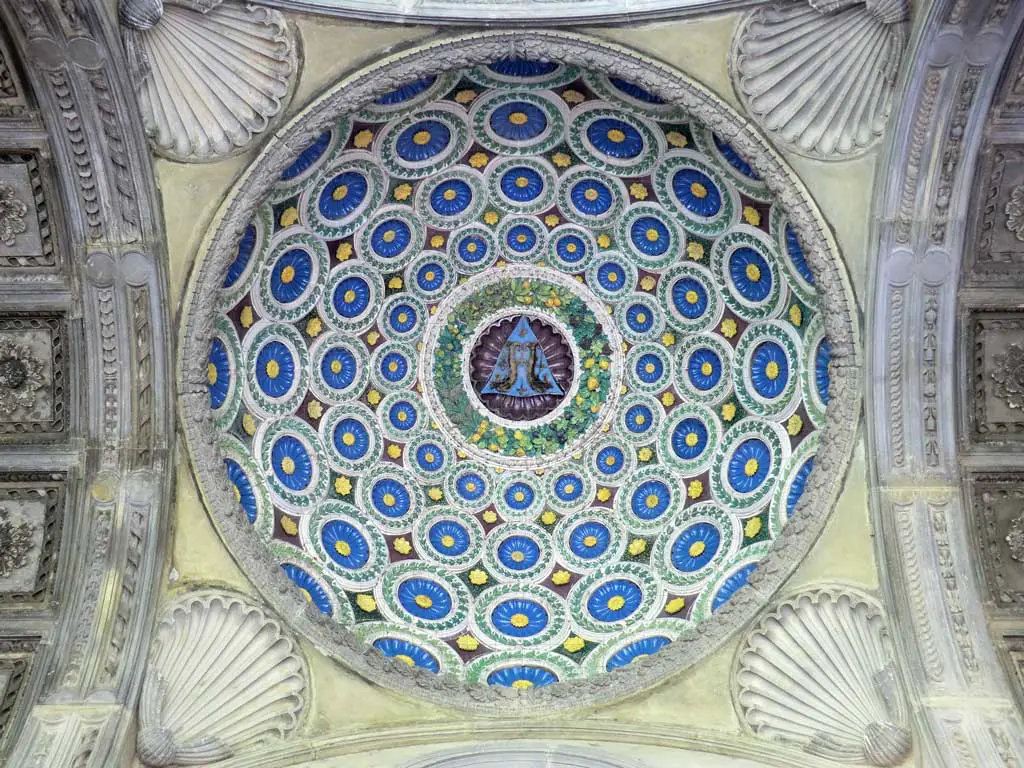
Illustrating the life of Christ and the saints, the striking frescoes made by Luca della Robbia and Benozzo Gozzoli adorn the Pazzi Chapel interior.
Another point that makes the structure even more significant is that it was commissioned by the Pazzi Family, who was one of the noblest Renaissance families, just like the Medici.
These powerful and wealthy families impacted Florence’s architecture and art in that period using their political and cultural forces. You can see signs of this power in the Pazzi structure as well.
For instance, the decoration including the Pazzi coat of arms is a sign that indicates the status and prestige of the family.
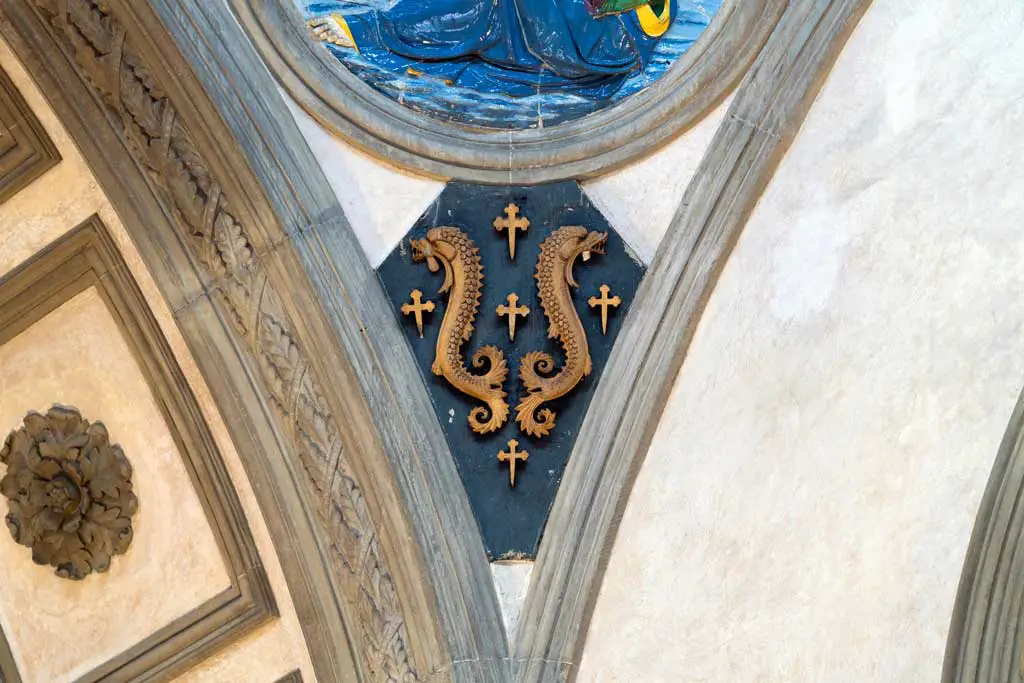
The design also had an impact on the development of the art and architecture of the Renaissance era. A great number of architects and artists have been inspired by the harmonious proportions and balanced use of different forms as well as its delicious frescoes and sculptures.
Consequently, the Pazzi Chapel by Filippo Brunelleschi is not only an architectural marvel but also the right place to explore the artistic and cultural situation in the early Renaissance period.
Visiting the Pazzi Chapel
Located in the center of Florence, the Pazzi Chapel is a must-visit Renaissance creation for anyone who is interested in architecture history and Renaissance style. Here’s a comprehensive guide to visiting the structure.
The structure is placed in the Cloister of Santa Croce and is open to the public every day from 9:00 am to 5:00 pm. Before deciding to go, you should check the up-to-date opening times on the official website.
The best way to experience the beauty of the chapel and explore its value is to buy a guided tour. By this means, you’ll learn detailed information about the structure, decorations and history of the chapel while beholding it. You can also buy an audio guide.
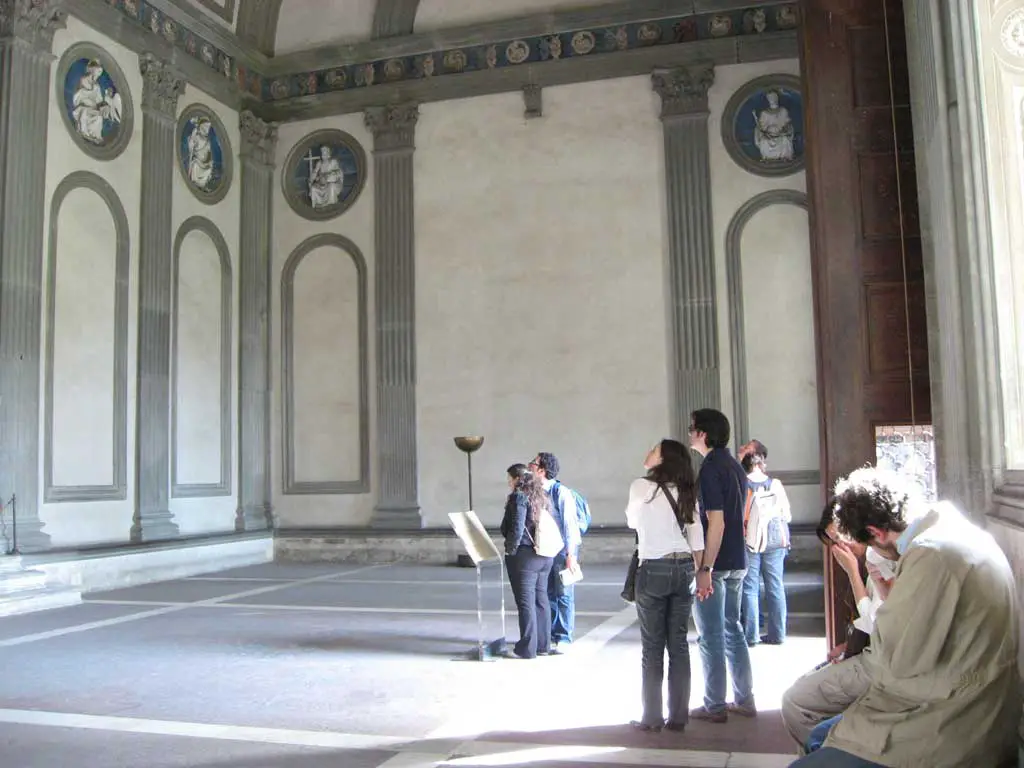
The building complex, where the chapel is located, contains many other important structures such as Basilica di Santa Croce, which is the final resting place of many famous artists including Michelangelo and Galileo.
If you have enough time, you can visit other buildings in the cluster while you’re there.
Briefly, the Pazzi Chapel, in the heart of Florence, is an admirable Renaissance structure that every art lover should visit. It is open to the public every day and also offers you a guided tour to enhance your visiting experience.
Conclusion
In conclusion, the Pazzi Chapel is a masterwork of Renaissance architecture and art. Designed in the 15th century by the well-known architect Filippo Brunelleschi, the structure is one of the most important buildings of the period.
The architectural style of the building features harmonical proportions of basic geometric forms and includes artistical details. Although it is a small chapel, it had a great impact on later Renaissance works.
If you plan a trip to this Renaissance city don’t leave without seeing the Pazzi.
Thanks for reading this article. If you have a question or thoughts about the Pazzi Chapel, don’t hesitate to make comment. Make sure you share this informative article with others.
Frequently Asked Questions
A: Famous Renaissance architect Filippo Brunelleschi designed the Pazzi Chapel. However, some arguments show that Brunelleschi did not design the whole structure and its details. Instead, he was only responsible for the plan.
Recently, architectural historians and academics claim that the architect of the building was probably Giuliano da Maiano or Michelozzo.
A: The budget was allocated by the Pazzi Family in 1429 but the construction started in 1442 and was completed in 1443.
A: No, the plan is not central but has a setup pretty close to a central plan.
A: The Pazzi Chapel mainly was built to create a chapter house for the cathedral and a meeting room for the Pazzi Family, as well as to accommodate religious classes.
A: The Pazzi Chapel is so important as it is one of the greatest examples of early Renaissance architecture and shows the skills of the renowned architect Filippo Brunelleschi. It also represents the power of the Pazzi Family.
A: Because the Medici Family commissioned the chapel.


